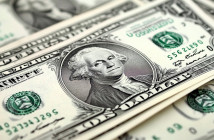The Fed is aiming to bring inflation under 2 per cent and for that it has resorted to the fastest rate hikes in history, with nine increases since March 2023.
The Federal Reserve, the central bank of America, on Wednesday went for another rate hike of 25 basis points to cool down persistently high inflation. The Fed is aiming to bring inflation under 2 per cent and for that it has resorted to the fastest rate hikes in history, with ten increases since March 2023. Despite the repeated rate hikes, inflation has not come down sharply. In March, inflation slowed to 5 per cent – which was still well above the Fed’s target.
Fed said the country’s economic activity expanded at a modest pace in the first quarter and job gains had been robust in recent months, and the unemployment rate had remained low while inflation remained elevated. The central bank said it seeks to achieve maximum employment and inflation at the rate of 2 per cent over the longer run. “In support of these goals, the Committee decided to raise the target range for the federal funds rate to 5 to 5-1/4 percent,” it said.
Fed, in the last meeting on March 22, hiked interest rates by 25 basis points and said that its rate-setting panel sought “to achieve maximum employment and inflation at the rate of 2 per cent over the longer run”.
While Fed has repeatedly said it would not rest until the job is done, many believed Fed may hit a pause button on the back of banking crisis and recession fears. Fed’s sudden and sharp rate hike brought down Silicon Valley Bank, whose fall triggered panic among investors and within days another lender – Signature Bank – crashed. Just two days ago, another American lender – First Republic Bank – failed and was acquired by JPMorgan.
Speaking on the banking crisis in March, Fed chair Jerome Powell said America’s banking system was sound and resilient with strong capital and liquidity but stressed that the central bank was strongly committed to bringing inflation down to 2 per cent.
“Inflation remains too high, and the labor market continues to be very tight,” he said during a press conference after announcing the rate hike in March. “My colleagues and I understand the hardship that high inflation is causing, and we remain strongly committed to bringing inflation back down to our 2 percent goal. Price stability is the responsibility of the Federal Reserve.”
Fed’s rate hikes appear to be showing results in containing the overheated market. As per the latest data, job openings fell sharply in March to the lowest level in nearly two years, a sign that the American labor market is cooling. US employers posted 9.6 million vacancies in March, down from nearly 10 million in the previous month and the lowest since April 2021.
Ahead of the announcement, stocks on Wall Street edged higher on the belief that the Fed was poised to pause and then cut interest rates on concerns a credit crunch will lead to a recession. A majority of the 11 S&P 500 sectors were higher, led by industrials, while energy was taking the biggest hit. But after the rate hike, markets turned negative.
Steven Ricchiuto, chief economist at Mizuho Securities USA LLC, said the market had a strong belief that the Fed was going to pause and would be forced to quickly pivot from rate hikes to rate cuts. He further said that recent price data suggested inflation was proving to be sticky as it decelerated, which should imply a “higher for longer” policy response from the Fed.
Fed, in its statement on Wednesday, said it is strongly committed to returning inflation to its 2 per cent objective but would be prepared to adjust the stance of monetary policy as appropriate if risks emerge that could impede the attainment of its goals.




